What stimulus does the insect obey when it employs the reserve powers that slumber in its race? Of what use are its industrial variations?
The Osmia will yield us her secret with no great difficulty. Let us examine her work in a cylindrical habitation. I have described in full detail, in the foregoing pages, the structure of her nests when the dwelling adopted is a reed-stump or any other cylinder; and Iwill content myself here with recapitulating the essential features of that nest-building.
We must first distinguish three classes of reeds according to their diameter: the small, the medium-sized and the large. I call small those whose narrow width just allows the Osmia to go about her household duties without discomfort. She must be able to turn where she stands in order to brush her abdomen and rub off its load of pollen, after disgorging the honey in the centre of the heap of flour already collected. If the width of the tube does not admit of this operation, if the insect is obliged to go out and then come in again backwards in order to place itself in a favourable posture for the discharge of the pollen, then the reed is too narrow and the Osmia is rather reluctant to accept it. The middle-sized reeds and a fortiori the large ones leave the victualler entire liberty of action; but the former do not exceed the width of a cell, a width agreeing with the bulk of the future cocoon, whereas the latter, with their excessive diameter, require more than one chamber on the same floor.
When free to choose, the Osmia settles by preference in the small reeds. Here, the work of building is reduced to its ******st expression and consists in dividing the tube by means of earthen partitions into a straight row of cells. Against the partition forming the back wall of the preceding cell the mother places first a heap of honey and pollen; next, when the portion is seen to be enough, she lays an egg in the centre of it. Then and then only she resumes her plasterer's work and marks out the length of the new cell with a mud partition. This partition in its turn serves as the rear-wall of another chamber, which is first victualled and then closed;and so on until the cylinder is sufficiently colonized and receives a thick terminal stopper at its orifice. In a word, the chief characteristic of this method of nest-building, the roughest of all, is that the partition in front is not undertaken so long as the victualling is still incomplete, or, in other words, that the provisions and the egg are deposited before the Bee sets to work on the partition.
At first sight, this latter detail hardly deserves attention: is it not right to fill the pot before we put a lid on? The Osmia who owns a medium-sized reed is not at all of this opinion; and other plasterers share her views, as we shall see when we watch the Odynerus building her nest. (A genus of Mason-wasps, the essays on which have not yet been translated into English.--Translator's Note.)Here we have an excellent illustration of one of those latent powers held in reserve for exceptional occasions and suddenly brought into play, although often very far removed from the insect's regular methods. If the reed, without being of inordinate width from the point of view of the cocoon, is nevertheless too spacious to afford the Bee a suitable purchase against the wall at the moment when she is disgorging honey and brushing off her load of pollen; the Osmia altogether changes the order of her work; she sets up the partition first and then does the victualling.
All round the inside of the tube she places a ring of mud, which, as the result of her constant visits to the mortar, ends by becoming a complete diaphragm minus an orifice at the side, a sort of round dog-hole, just large enough for the insect to pass through. When the cell is thus marked out and almost wholly closed, the Osmia attends to the storing of her provisions and the laying of her eggs. Steadying herself against the margin of the hole at one time with her fore-legs and at another with her hind-legs, she is able to empty her crop and to brush her abdomen; by pressing against it, she obtains a foothold for her little efforts in these various operations. When the tube was narrow, the outer wall supplied this foothold and the earthen partition was postponed until the heap of provisions was completed and surmounted by the egg; but in the present case the passage is too wide and would leave the insect floundering helplessly in space, so the partition with its serving-hatch takes precedence of the victuals. This method is a little more expensive than the other, first in materials, because of the diameter of the reed, and secondly in time, if only because of the dog-hole, a delicate piece of mortar-work which is too soft at first and cannot be used until it has dried and become harder. Therefore the Osmia, who is sparing of her time and strength, accepts medium-sized reeds only when there are no small ones available.
The large tubes she will use only in grave emergencies and I am unable to state exactly what these exceptional circumstances are.
Perhaps she decides to make use of those roomy dwellings when the eggs have to be laid at once and there is no other shelter in the neighbourhood. While my cylinder-hives gave me plenty of well-filled reeds of the first and second class, they provided me with but half-a-dozen at most of the third, notwithstanding my precaution to furnish the apparatus with a varied assortment.














